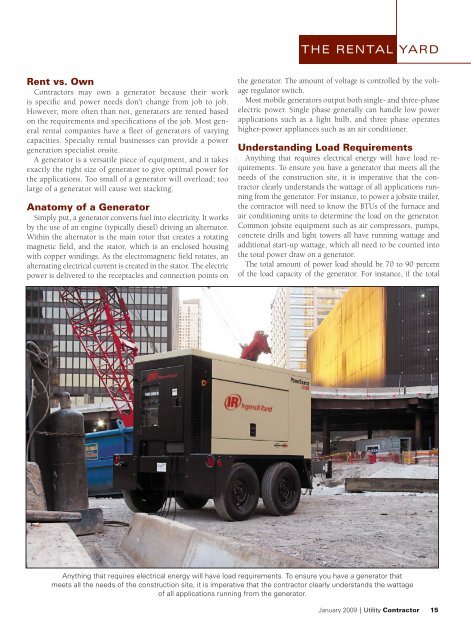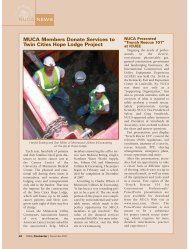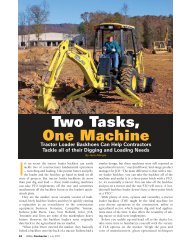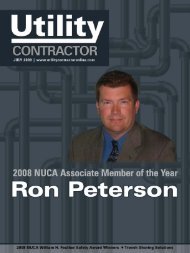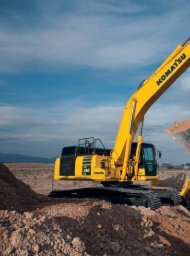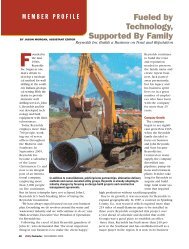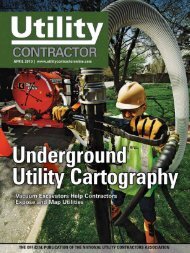View Full January PDF Issue - Utility Contractor Online
View Full January PDF Issue - Utility Contractor Online
View Full January PDF Issue - Utility Contractor Online
You also want an ePaper? Increase the reach of your titles
YUMPU automatically turns print PDFs into web optimized ePapers that Google loves.
THE RENTAL YARDRent vs. Own<strong>Contractor</strong>s may own a generator because their workis specific and power needs don’t change from job to job.However, more often than not, generators are rented basedon the requirements and specifications of the job. Most generalrental companies have a fleet of generators of varyingcapacities. Specialty rental businesses can provide a powergeneration specialist onsite.A generator is a versatile piece of equipment, and it takesexactly the right size of generator to give optimal power forthe applications. Too small of a generator will overload; toolarge of a generator will cause wet stacking.Anatomy of a GeneratorSimply put, a generator converts fuel into electricity. It worksby the use of an engine (typically diesel) driving an alternator.Within the alternator is the main rotor that creates a rotatingmagnetic field, and the stator, which is an enclosed housingwith copper windings. As the electromagnetic field rotates, analternating electrical current is created in the stator. The electricpower is delivered to the receptacles and connection points onthe generator. The amount of voltage is controlled by the voltageregulator switch.Most mobile generators output both single- and three-phaseelectric power. Single phase generally can handle low powerapplications such as a light bulb, and three phase operateshigher-power appliances such as an air conditioner.Understanding Load RequirementsAnything that requires electrical energy will have load requirements.To ensure you have a generator that meets all theneeds of the construction site, it is imperative that the contractorclearly understands the wattage of all applications runningfrom the generator. For instance, to power a jobsite trailer,the contractor will need to know the BTUs of the furnace andair conditioning units to determine the load on the generator.Common jobsite equipment such as air compressors, pumps,concrete drills and light towers all have running wattage andadditional start-up wattage, which all need to be counted intothe total power draw on a generator.The total amount of power load should be 70 to 90 percentof the load capacity of the generator. For instance, if the totalAnything that requires electrical energy will have load requirements. To ensure you have a generator thatmeets all the needs of the construction site, it is imperative that the contractor clearly understands the wattageof all applications running from the generator.<strong>January</strong> 2009 | <strong>Utility</strong> <strong>Contractor</strong> 15


